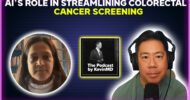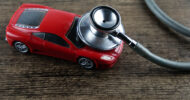Medicine is at risk from a technology takeover.
Consider hospital rounds, for instance. Records are electronic, and doctors have to sort through data from an increasing number of diagnostic tests, like laboratory values and imaging results. Even before stepping into a patient’s room.
Stanford’s Abraham Verghese continually reminds doctors about what’s most important: the patient before us. In fact, his essay published a few years back in the New England Journal of Medicine, entitled, “Culture Shock — Patient as Icon, Icon as Patient,” remains required reading.
In a recent piece in The Atlantic, Dr. Verghese again writes not to let technology obstruct patient care. Indeed, he observes that “I still find the best way to understand a hospitalized patient whose care I am taking over is not by staring at the computer screen (or not by that alone) but by going to see the patient; it’s only at the bedside that I can figure out what is important.”
It is this careful balance between interpreting quantitative data and knowing how the patient is doing subjectively that separates good doctors from those who are truly great.

















![Working patients and health care [PODCAST]](https://www.kevinmd.com/wp-content/uploads/Working-patients-and-health-care-190x100.jpg)

![AI’s role in simplifying communication [PODCAST]](https://www.kevinmd.com/wp-content/uploads/AIs-role-in-simplifying-communication-190x100.jpg)

